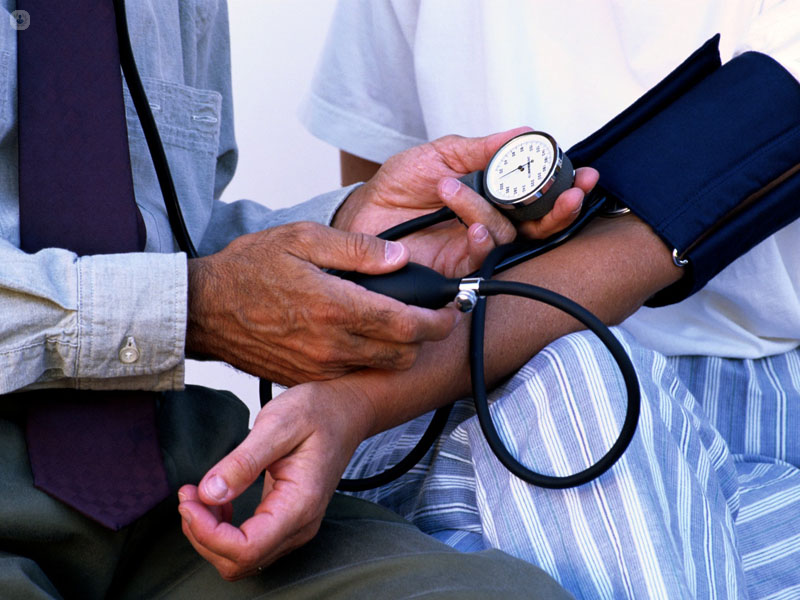5 ways to diagnose high blood pressure
Autore:Hypertension is very common in our society. By the age of 60 half of our population has high blood pressure. It’s important to keep a check on your current blood pressure level because it can change with time. Leading cardiologist Professor Jamil Mayet explains:

Causes and symptoms of hypertension
High blood pressure is associated with many aspects of modern life, such as the high salt content in our foods, insufficient exercise and a high alcohol intake, as well as also having a hereditary element. Occasionally there can be a specific underlying disease causing it.
High blood pressure is important because it increases the risk of strokes, heart attacks and premature death. Often, patients have no symptoms, but it can cause headaches and other vague symptoms of feeling generally unwell.
Diagnosing hypertension
It’s really important to be sure that a diagnosis of high blood pressure is correct and guidelines emphasise the importance of 24-hour blood pressure monitoring and also checking if there are any changes in the heart and other parts of the body associated with high blood pressure. These tests may help to determine whether there is sustained high blood pressure that needs treating and if there is, whether it’s reasonable to treat with lifestyle changes alone in the first instance or to also treat early with medication.
Tests that can be helpful if assessing patients with high blood pressure include:
1. Electrocardiogram (ECG)
This gives information about the heart’s rhythm. It also can give an indication of whether the heart may have been affected by high blood pressure.
2. Echocardiogram (an ultrasound test of the heart)
This can assess the condition of the heart, its ability to pump blood, and also the condition of the valves. The heart walls may become thickened due to high blood pressure and the shape of the main artery coming out of the heart, the aorta, can also be affected. These can be important changes which help indicate whether we should advise to treat with medication now or whether it is reasonable to try lifestyle changes to control the blood pressure first.
3. 24-hour blood pressure monitor (this is a BP monitor connected to an arm cuff that you take home with you)
It typically measures your blood pressure every half an hour during the day and every hour at night to give daytime and night-time blood pressure averages. This information can help guide whether you have sustained hypertension or so called “white coat” hypertension where your blood pressure tends to go up when a doctor or nurse measures it.
4. Blood tests
We generally like to look at a number of blood tests in patients with suspected high blood pressure. The kidney function and the level of some salts, such as sodium and potassium in the blood are particularly important, and can help give clues about whether there might be an unusual underlying cause for the hypertension. We would normally check that there is no sign of diabetes and also assess the cholesterol and other lipid levels to help to assess the overall risk of future heart attacks and strokes.
5. Exercise testing
Sometimes it can be helpful to assess the heart and blood pressure levels during and after exercise. The blood pressure change with exercise is another measurement that can help distinguish sustained hypertension from a “white coat” effect.
Treating high blood pressure
Luckily, there are many ways of lowering blood pressure. In some patients it’s possible that non-drug treatments, like reducing salt intake, reducing alcohol consumption, and/or undertaking regular exercise can significantly lower blood pressure without the need for medication. If medication is needed, there are lots of options to find the treatment that suits you best.
For those patients who are on treatment for high blood pressure, it may be worth checking whether your current blood pressure levels are still optimal for reducing your future risk of strokes and heart attacks. A big recent US study has suggested that traditional blood pressure targets may be higher than ideal. It takes time for new research findings to become adapted into clinical guidelines and it may be worth a specialist assessment to check that your blood pressure level is optimal.


